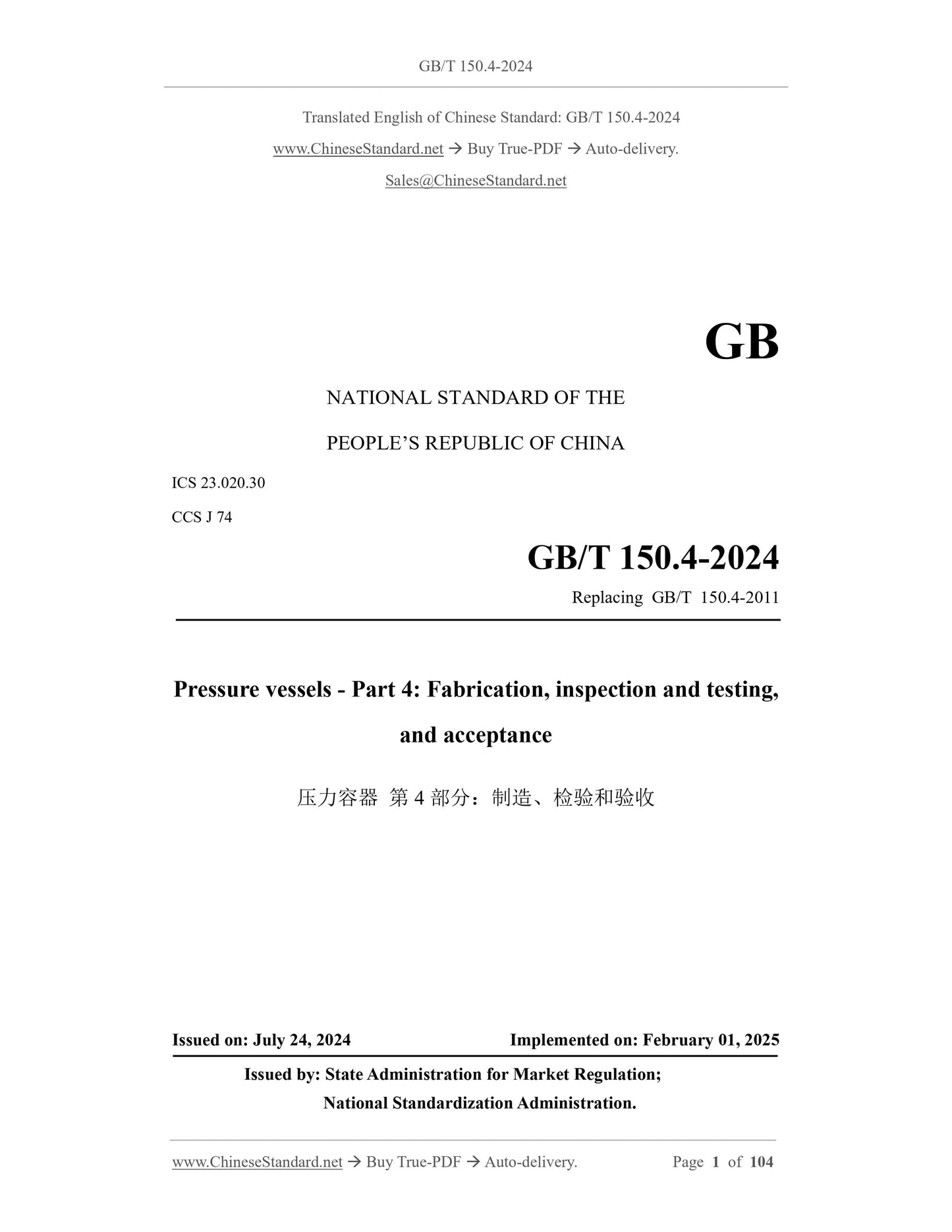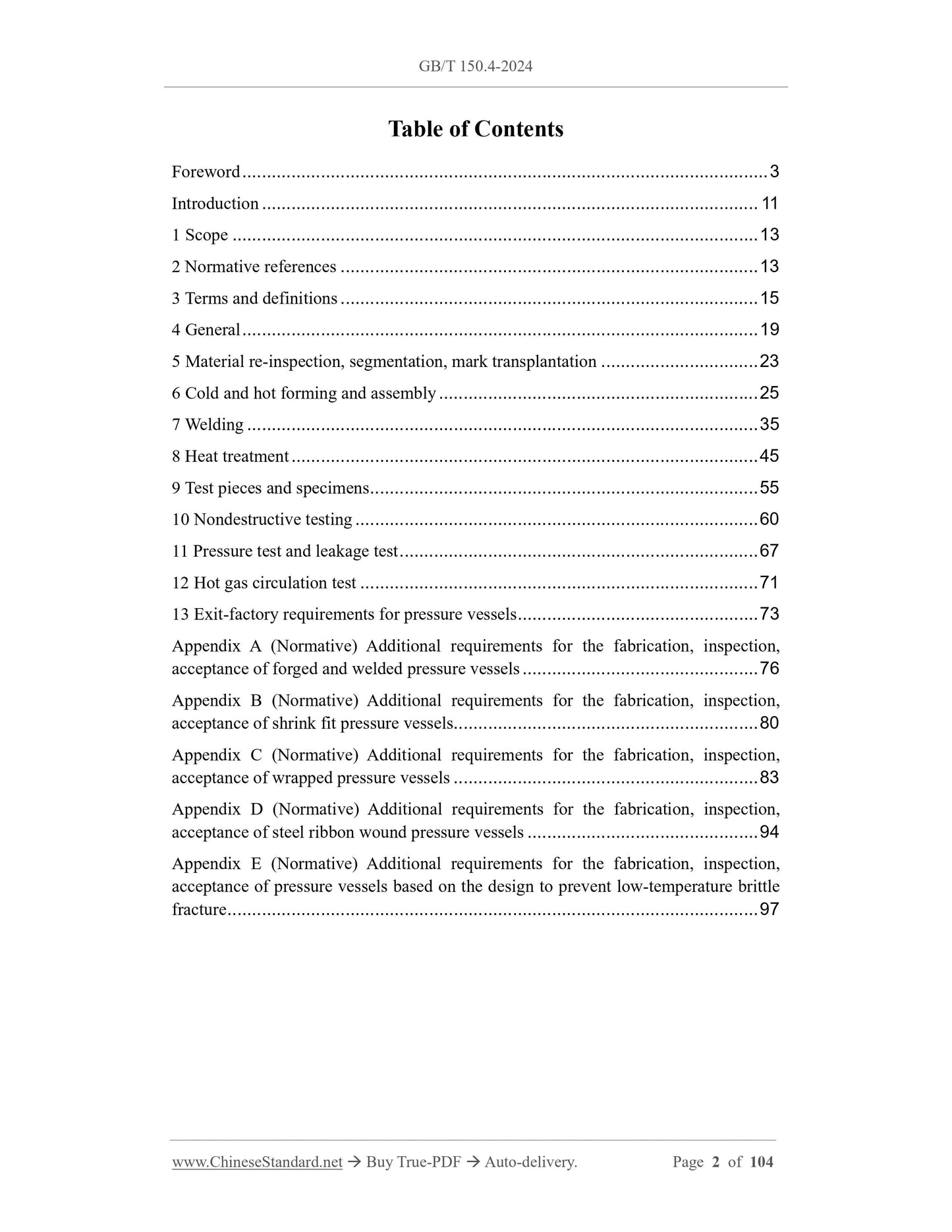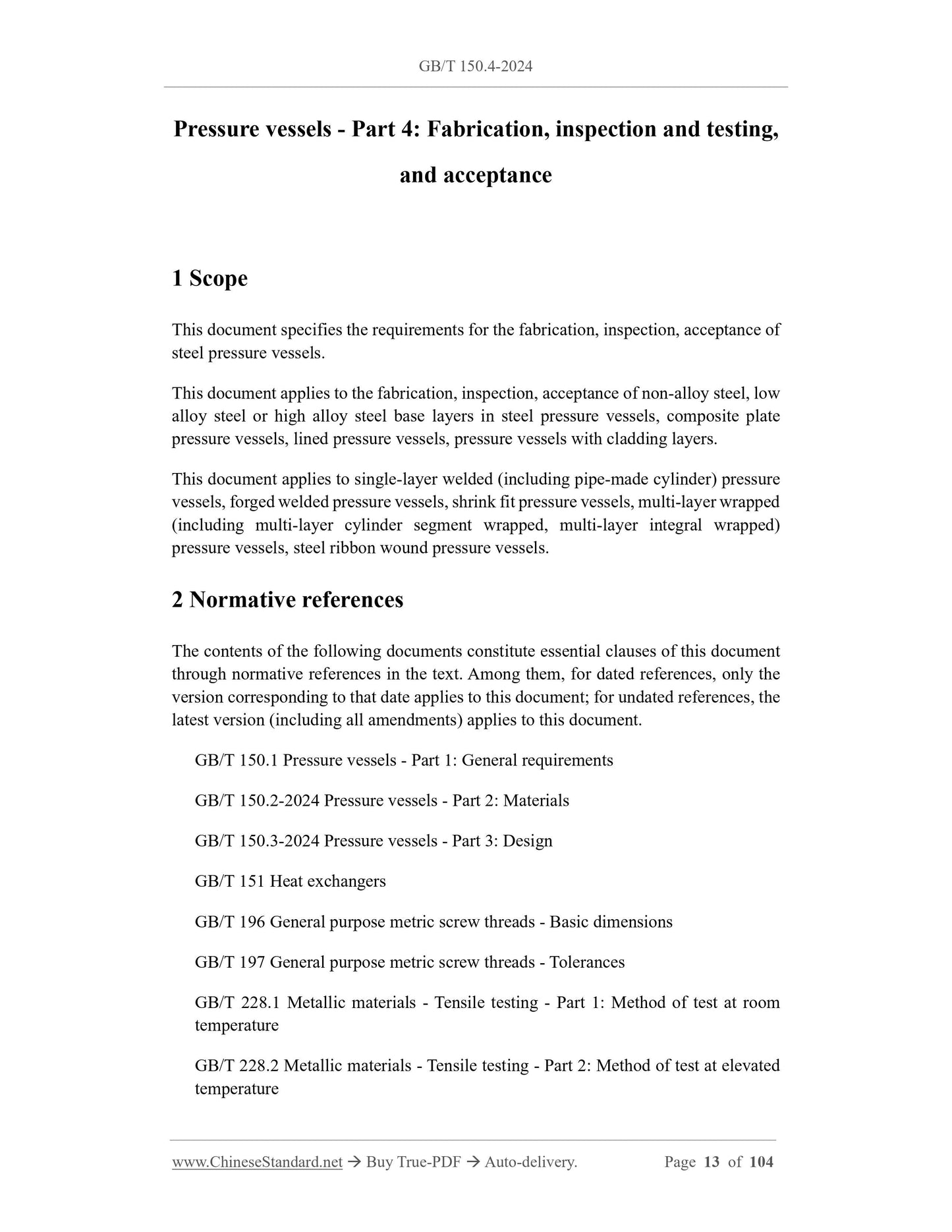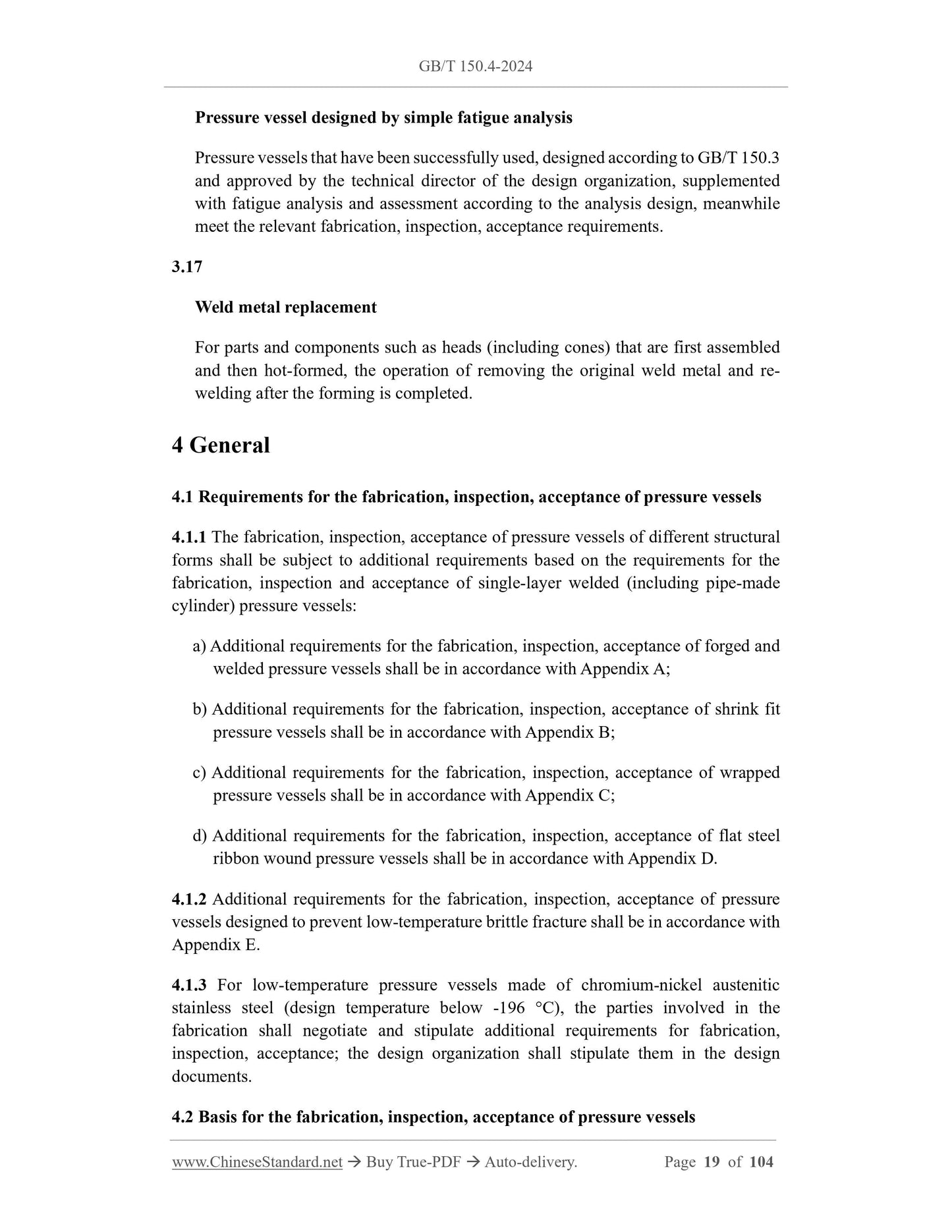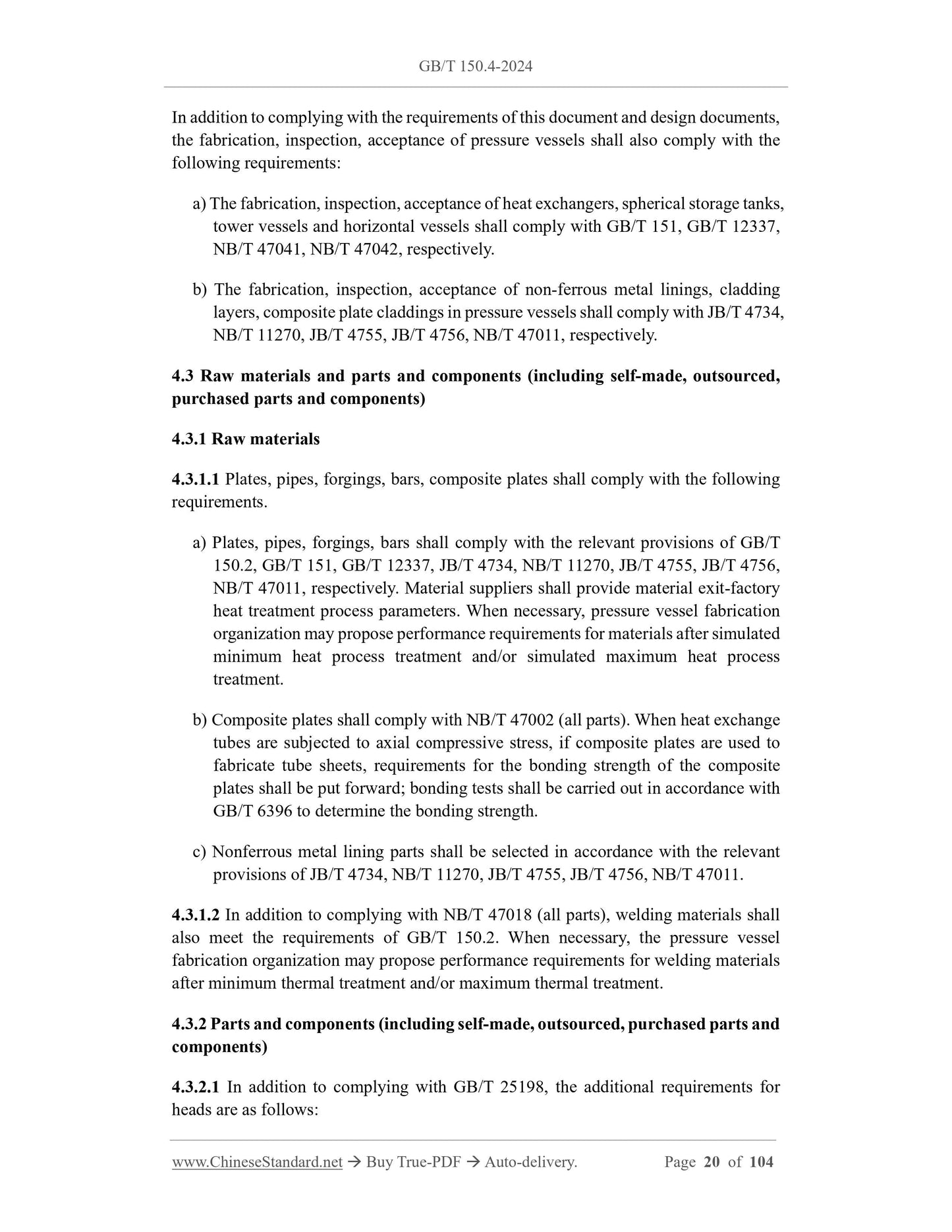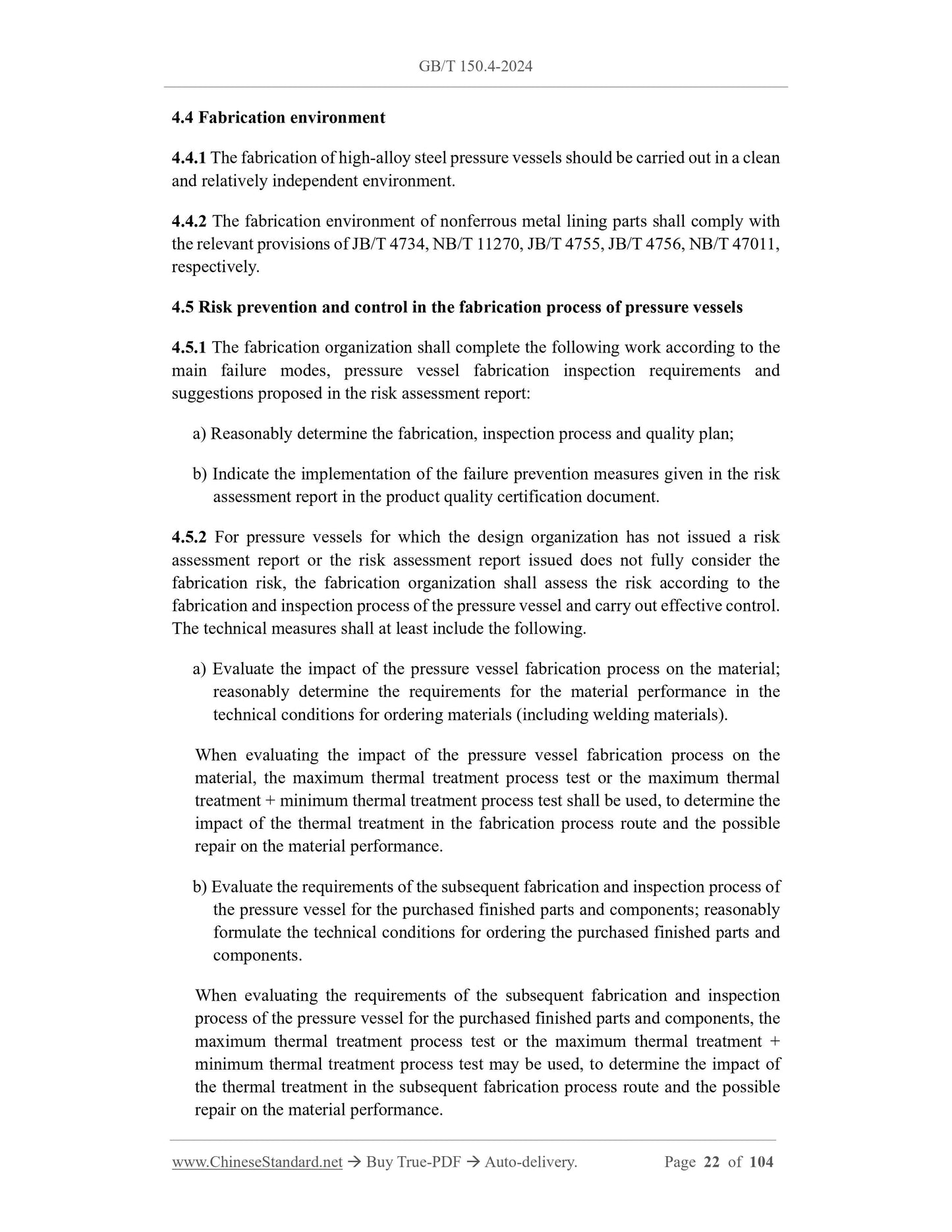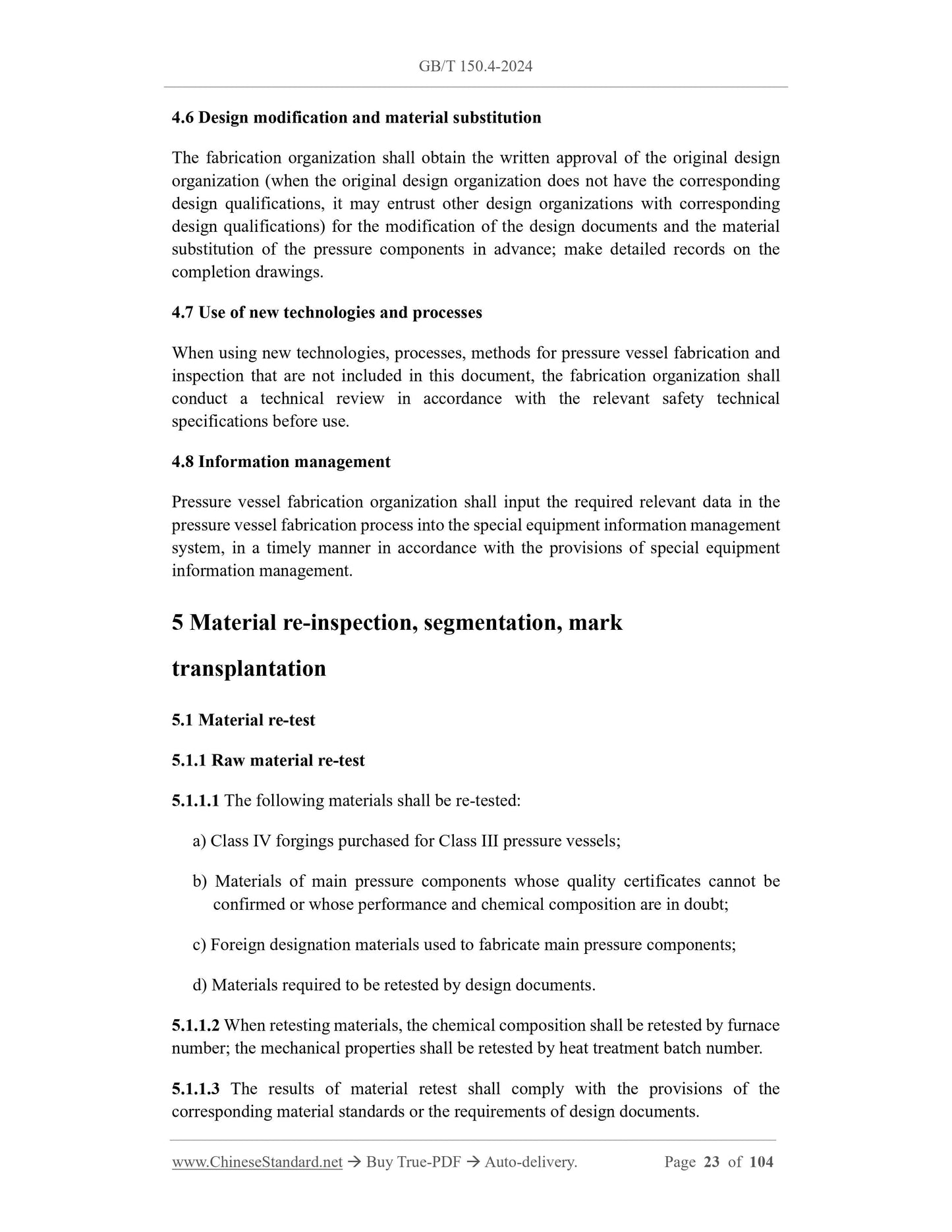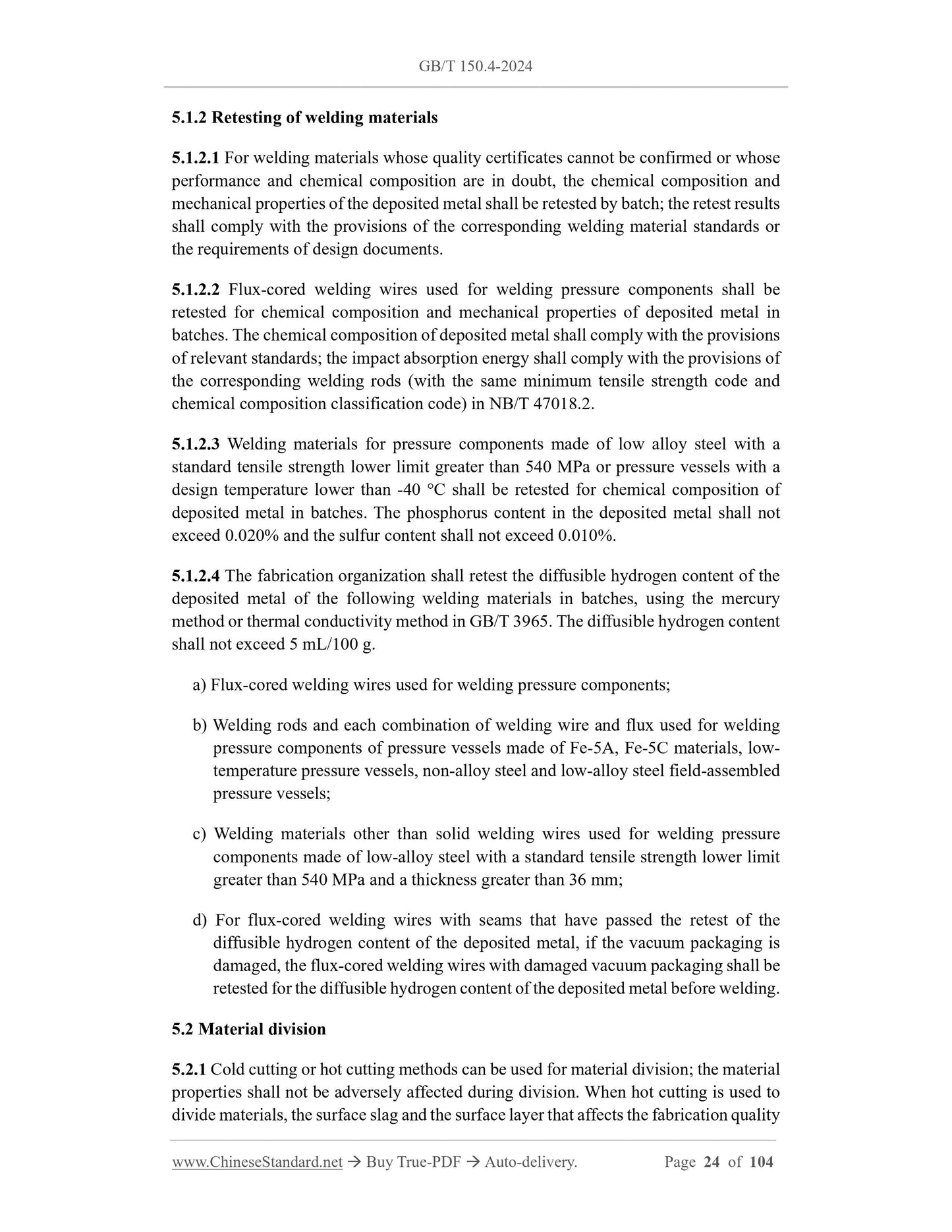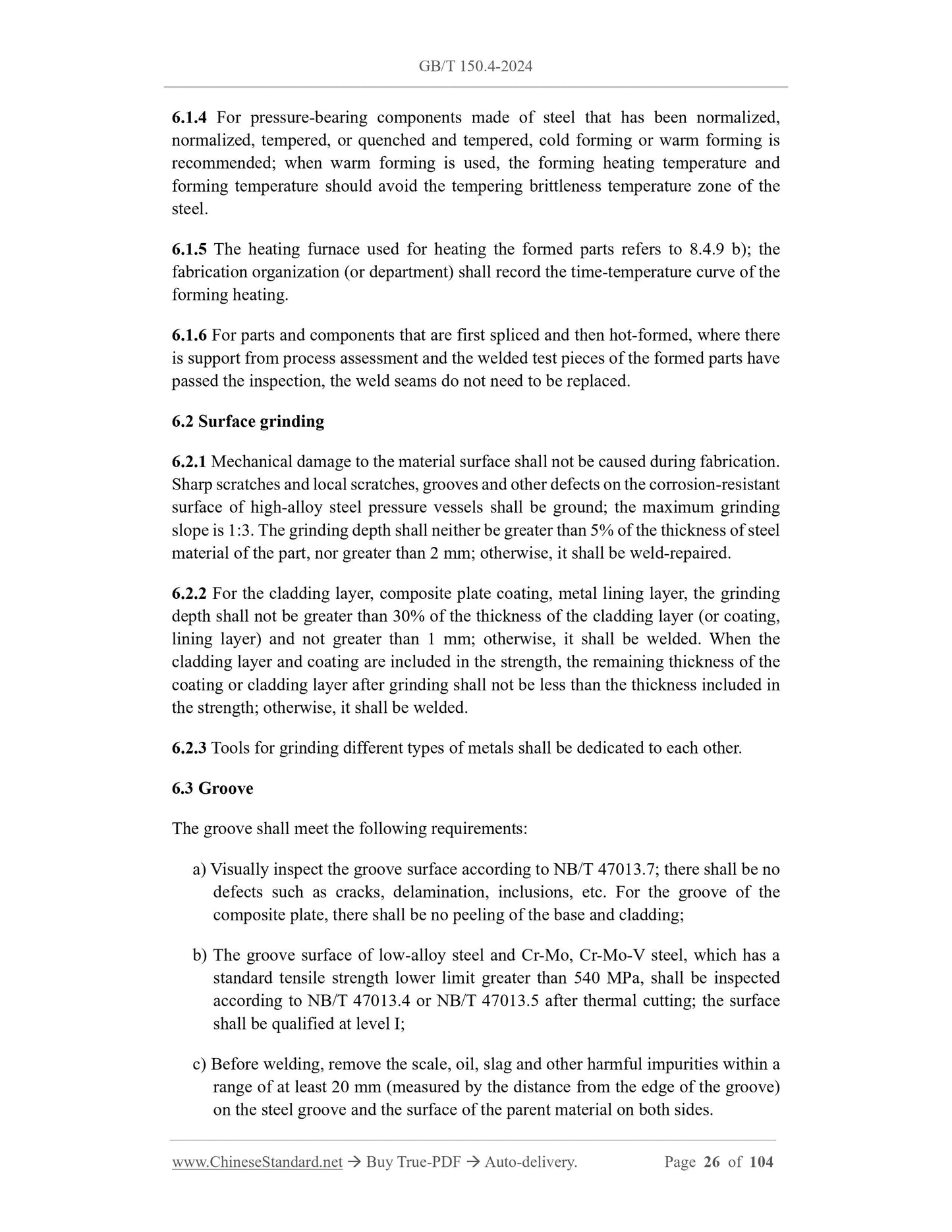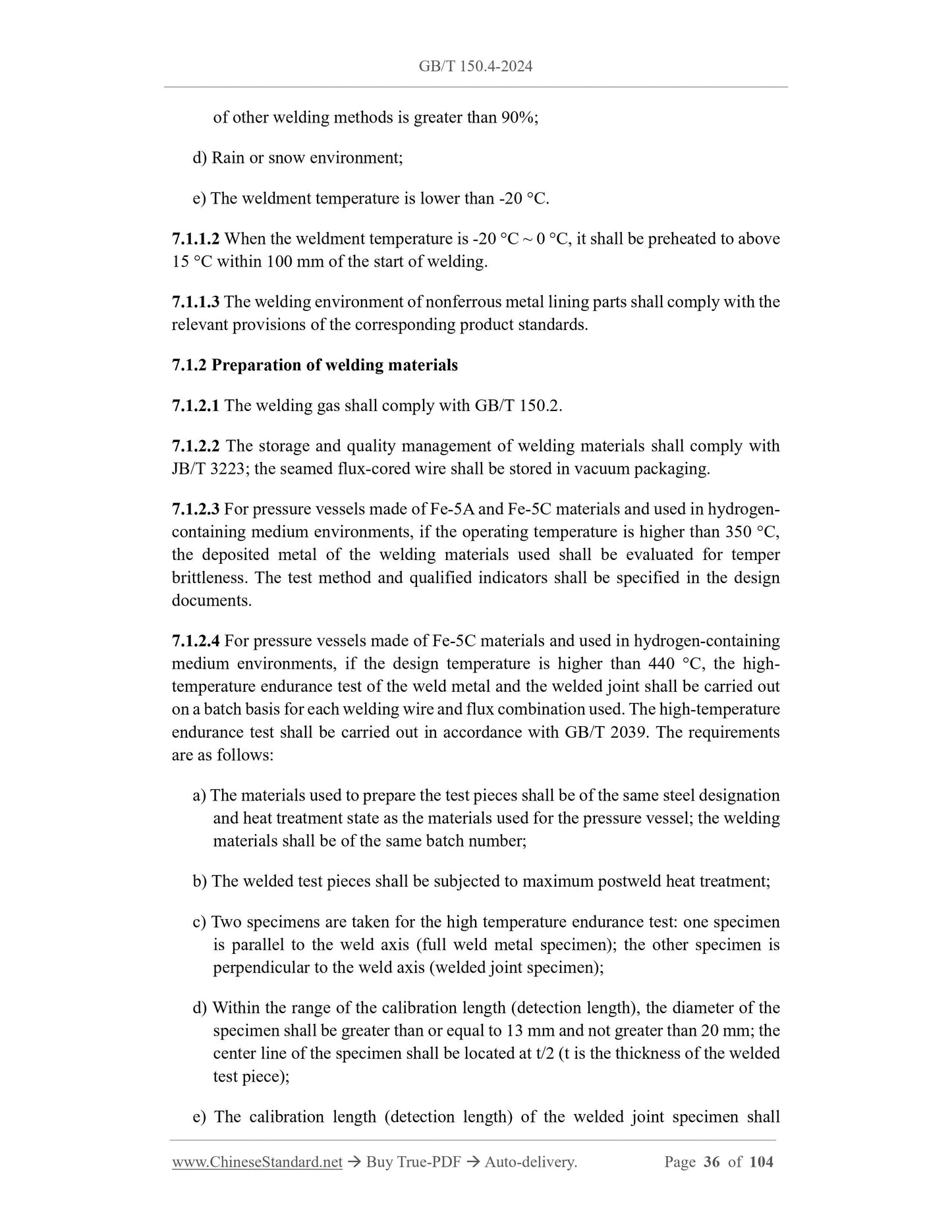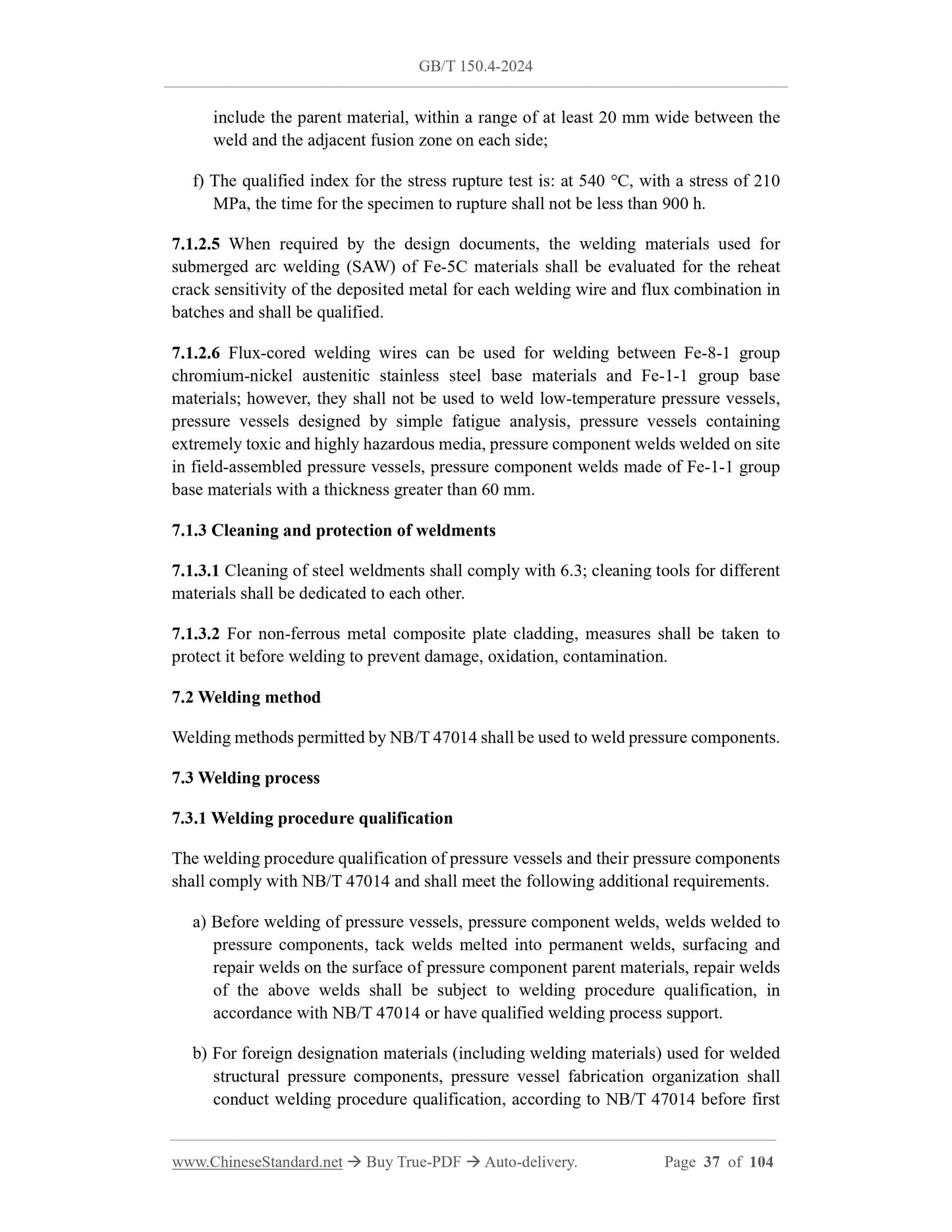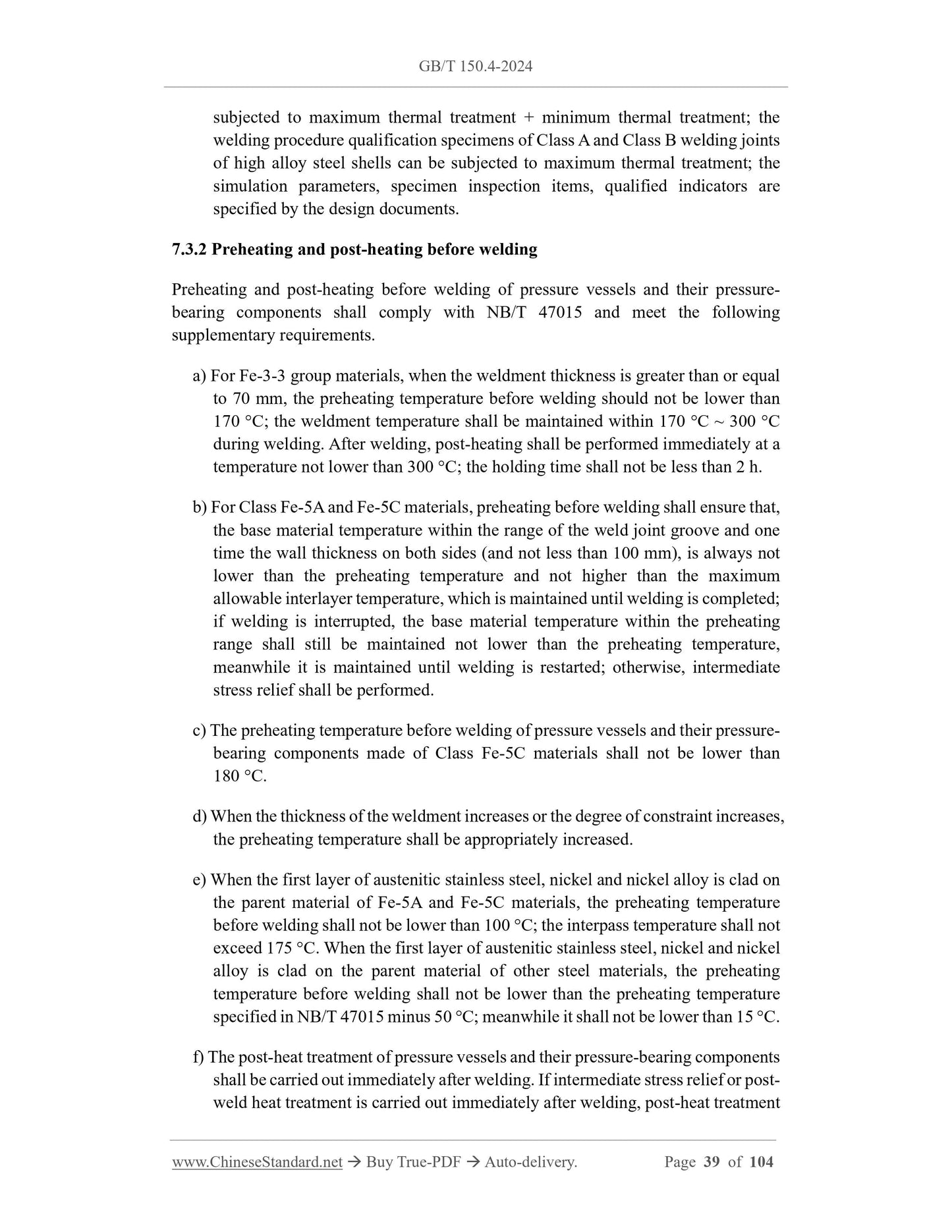1
/
of
12
www.ChineseStandard.us -- Field Test Asia Pte. Ltd.
GB/T 150.4-2024 English PDF (GB/T150.4-2024)
GB/T 150.4-2024 English PDF (GB/T150.4-2024)
Regular price
$795.00
Regular price
Sale price
$795.00
Unit price
/
per
Shipping calculated at checkout.
Couldn't load pickup availability
GB/T 150.4-2024: Pressure vessels - Part 4: Fabrication, inspection and testing, and acceptance
Delivery: 9 seconds. Download (and Email) true-PDF + Invoice.Get Quotation: Click GB/T 150.4-2024 (Self-service in 1-minute)
Newer / historical versions: GB/T 150.4-2024
Preview True-PDF
Scope
This document specifies the requirements for the fabrication, inspection, acceptance ofsteel pressure vessels.
This document applies to the fabrication, inspection, acceptance of non-alloy steel, low
alloy steel or high alloy steel base layers in steel pressure vessels, composite plate
pressure vessels, lined pressure vessels, pressure vessels with cladding layers.
This document applies to single-layer welded (including pipe-made cylinder) pressure
vessels, forged welded pressure vessels, shrink fit pressure vessels, multi-layer wrapped
(including multi-layer cylinder segment wrapped, multi-layer integral wrapped)
pressure vessels, steel ribbon wound pressure vessels.
Basic Data
| Standard ID | GB/T 150.4-2024 (GB/T150.4-2024) |
| Description (Translated English) | Pressure vessels - Part 4: Fabrication, inspection and testing, and acceptance |
| Sector / Industry | National Standard (Recommended) |
| Classification of Chinese Standard | J74 |
| Classification of International Standard | 23.020.30 |
| Word Count Estimation | 67,624 |
| Date of Issue | 2024-07-24 |
| Date of Implementation | 2025-02-01 |
| Older Standard (superseded by this standard) | GB/T 150.4-2011 |
| Issuing agency(ies) | State Administration for Market Regulation, China National Standardization Administration |
Share
